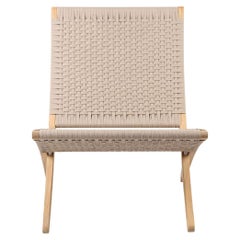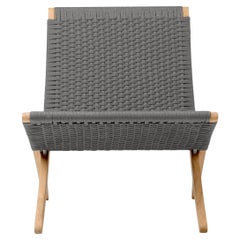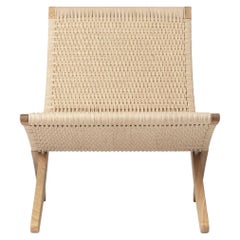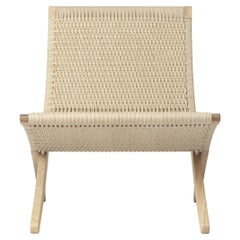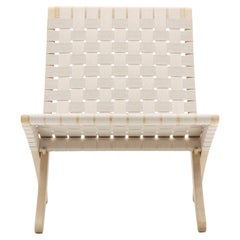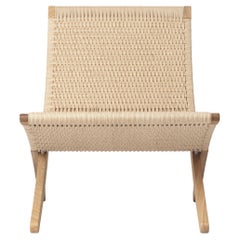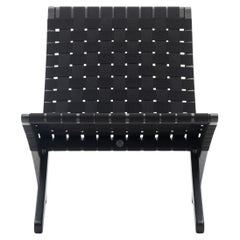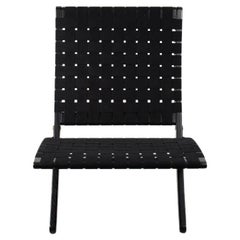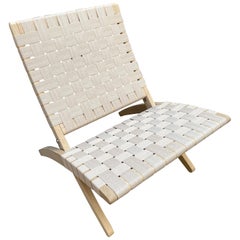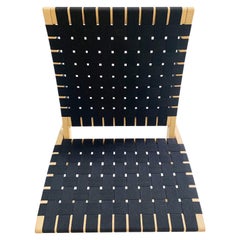Carl Hansen Cuba
21st Century and Contemporary Danish Mid-Century Modern Lounge Chairs
Rope, Wood, Teak
21st Century and Contemporary Danish Mid-Century Modern Lounge Chairs
Rope, Teak, Wood
21st Century and Contemporary Danish Mid-Century Modern Lounge Chairs
Papercord, Wood, Oak
21st Century and Contemporary Danish Mid-Century Modern Lounge Chairs
Oak, Papercord
21st Century and Contemporary Danish Mid-Century Modern Lounge Chairs
Cotton, Oak
21st Century and Contemporary Danish Mid-Century Modern Lounge Chairs
Papercord, Oak
21st Century and Contemporary Danish Mid-Century Modern Lounge Chairs
Cotton, Oak
21st Century and Contemporary Danish Mid-Century Modern Lounge Chairs
Wood, Oak, Cotton
21st Century and Contemporary Danish Scandinavian Modern Lounge Chairs
Oak, Fabric
Recent Sales
2010s Danish Armchairs
Oak
1990s Danish Modern Lounge Chairs
Oak
People Also Browsed
2010s Argentine Other Tapestries
Cotton
21st Century and Contemporary British Organic Modern Wall Lights and Sco...
Plaster
21st Century and Contemporary American Mid-Century Modern Wall Lights an...
Enamel, Brass
21st Century and Contemporary Swedish Mid-Century Modern Table Lamps
Textile
1990s Italian Mid-Century Modern Chandeliers and Pendants
Brass
21st Century and Contemporary European Modern Side Tables
Travertine, Stone
21st Century and Contemporary Swedish Scandinavian Modern Lounge Chairs
Sheepskin, Wool, Bouclé, Beech, Oak, Walnut
Mid-20th Century European Mid-Century Modern Pedestals
Travertine
21st Century and Contemporary Italian Mid-Century Modern Dining Room Tables
Travertine
21st Century and Contemporary Belgian Modern Stools
Steel
21st Century and Contemporary French Side Tables
Concrete, Steel
Vintage 1960s American Mid-Century Modern Chaise Longues
Upholstery, Walnut
Vintage 1960s Swedish Mid-Century Modern Cabinets
Rattan, Pine
2010s Indian Modern Wall Lights and Sconces
Brass
2010s Portuguese Minimalist Night Stands
Burl, Poplar
2010s American Modern Stools
Brass
Carl Hansen Cuba For Sale on 1stDibs
How Much is a Carl Hansen Cuba?
Carl Hansen & Søn for sale on 1stDibs
Family-owned since its inception, Carl Hansen & Søn has been one of the most prestigious furniture manufacturers in Denmark for more than a century. The firm has produced timeless masterpieces of Scandinavian modernism by iconic designers Hans Wegner, Arne Jacobsen, Børge Mogensen and others.
In 1908, cabinetmaker Carl Hansen opened his first small workshop near Odense, Denmark, where he created furniture by hand in the preferred Victorian style of the times. Hansen expanded his operations by 1915 due to high demand. The larger factory allowed room for more modern machinery and a staff of many journeymen who produced a small series of their most popular pieces, including coffee tables, cabinets and sculptural, inviting armchairs. The firm became known for marrying the finest handmade craftsmanship with efficient production processes.
The Great Depression of the 1930s saw worldwide furniture sales plummet, and many furniture manufacturers were forced to shutter their workshops. At the age of 23, furniture maker Carl Hansen’s youngest son, Holger, took control of his father’s factory and piloted it through the era’s uncertain waters.
Holger Hansen’s youthful enthusiasm, innovative spirit, and intuitive business savvy kept their company afloat. He believed in the quality of the firm’s work and the cutting-edge designs that were produced at its factory, which emerged from modest beginnings to become a pivotal piece of the history of Danish furniture.
Owing to Holger’s leadership, Carl Hansen & Søn emerged from the Great Depression and entered into creative alliances with many acclaimed Danish masters of mid-century design, including Kaare Klint, Børge Mogensen, Arne Jacobsen, Ole Wanscher, Frits Henningsen and Poul Kjærholm.
None of these partnerships proved as prolific as their relationship with Hans Wegner, however. In 1949, the cabinetmaker moved to Denmark’s Funen Island and was staying in Holger’s family home, as the then-Carl Hansen CEO had commissioned Wegner to create a chair for the company that was similar to his popular China chair of 1944.
Wegner began to work closely with the company’s craftsmen and devised a streamlined chair with a Y-shaped back and woven paper-cord seat. The legendary Wishbone chair, which still involves nearly 100 processes and takes weeks to make, has been in continuous production since its 1950 debut.
Carl Hansen & Søn has manufactured some of the most extraordinary chairs, sofas and lounge chairs for living room relaxation in the history of design. Their dining room tables and chairs run the gamut in style and functionality, from everyday comfort to elegant entertaining. The company’s impressive roster of contemporary designers includes renowned Japanese architect Tadao Ando, the Vienna-based design firm EOOS and celebrated American industrial designer Brad Ascalon. They remain the world’s largest producer of Wegner’s furniture and still enjoy a collaborative relationship with the Hans J. Wegner Studio.
On 1stDibs, find vintage Carl Hansen & Søn chairs, tables, case pieces and other furniture.
Finding the Right Lounge-chairs for You
While this specific seating is known to all for its comfort and familiar form, the history of how your favorite antique or vintage lounge chair came to be is slightly more ambiguous.
Although there are rare armchairs dating back as far as the 17th century, some believe that the origins of the first official “lounge chair” are tied to Hungarian modernist designer-architect Marcel Breuer. Sure, Breuer wasn’t exactly reinventing the wheel when he introduced the Wassily lounge chair in 1925, but his seat was indeed revolutionary for its integration of bent tubular steel.
Officially, a lounge chair is simply defined as a “comfortable armchair,” which allows for the shape and material of the furnishings to be extremely diverse. Whether or not chaise longues make the cut for this category is a matter of frequent debate.
The Eames lounge chair, on the other hand, has come to define somewhat of a universal perception of what a lounge chair can be. Introduced in 1956, the Eames lounger (and its partner in cozy, the ottoman) quickly became staples in television shows, prestigious office buildings and sumptuous living rooms. Venerable American mid-century modern designers Charles and Ray Eames intended for it to be the peak of luxury, which they knew meant taking furniture to the next level of style and comfort. Their chair inspired many modern interpretations of the lounge — as well as numerous copies.
On 1stDibs, find a broad range of unique lounge chairs that includes everything from antique Victorian-era seating to vintage mid-century modern lounge chairs by craftspersons such as Hans Wegner to contemporary choices from today’s innovative designers.
